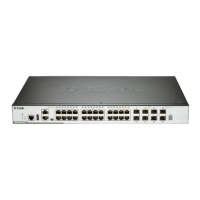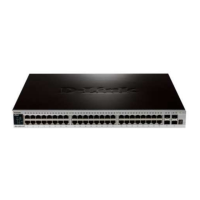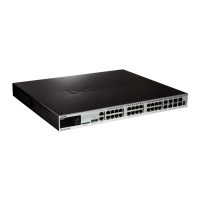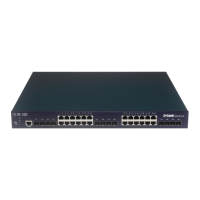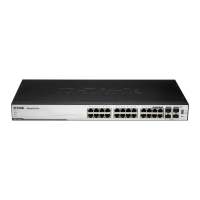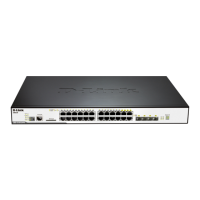DGS-3630 Series Layer 3 Stackable Managed Switch Web UI Reference Guide
285
The fields that can be configured are described below:
Parameter Description
Interface VLAN
Enter the associated VLAN ID of the interface here. The range is from 1 to 4094.
Click the Find button to locate a specific entry based on the information entered.
Click the Show All button to display all the entries.
Click the Edit button to modify the specified entry.
Enter a page number and click the Go button to navigate to a specific page when multiple pages exist.
After clicking the Edit button, the following page will appear.
Figure 6-102 MLD Interface Settings (Edit) Window
The fields that can be configured are described below:
Parameter Description
Version
Select the MLD version that will be used on the interface here. Options to choose
from are 1 and 2. Select the Default option to use the default version, which is
MLDv2.
MLD State
Select to enable or disable the MLD feature on this interface here.
Query Interval
Enter the query interval here. This specifies the frequency at which the
designated router sends MLD general-query messages. On receiving the general
query, the MLD listener needs to respond the report packet to claim that it is
interested in the specified multicast group. The range is from 1 to 31744 seconds.
Select the Default option to use the default value, which is 125 seconds.
Query Max Response Time
Enter the maximum query response time value here. This specifies the maximum
response time advertised in MLD queries. The range is from 1 to 25 seconds.
Select the Default option to use the default value, which is 10 seconds.
Robustness Variable
Enter the robustness variable value here. The robustness variable provides fine-
tuning to allow for expected packet loss on an interface. The range is from 1 to 7.
Select the Default option to use the default value, which is 2.
Last Listener Query Count
Enter the last member query count value here. This is used to configure the
number of group-specific or group-source specific queries sent before the router
assumes there are no local members in a group. If the router does not receive
reports from hosts within the timeout period, the router will stop sending the
multicast group traffic to the interface. The range is from 1 to 7. Select the Default
option to use the default value, which is 2.
Last Listener Query Interval
Enter the interval for the amount of time between group-specific or group-source-
specific queries here. When an MLD querier receives a packet to leave the group
or channel, it will send a group-specific query or group-source-specific query. The
leave timer starts once the MLD querier receives the packet on an interface. If the

